I’ve been following the work of plein air artist Jeremy Sams on Instagram for quite a while and recently realized that it was nearly selfish of me not to share it with more people. After reaching out to him, we agreed that a Q&A would be a great way to feature his paintings, which I think you’ll also love. In this interview, Jeremy tells us how he lines up the backgrounds on his canvas so well, his advice for beginners, and what he wishes he knew when he first began painting en plein air.
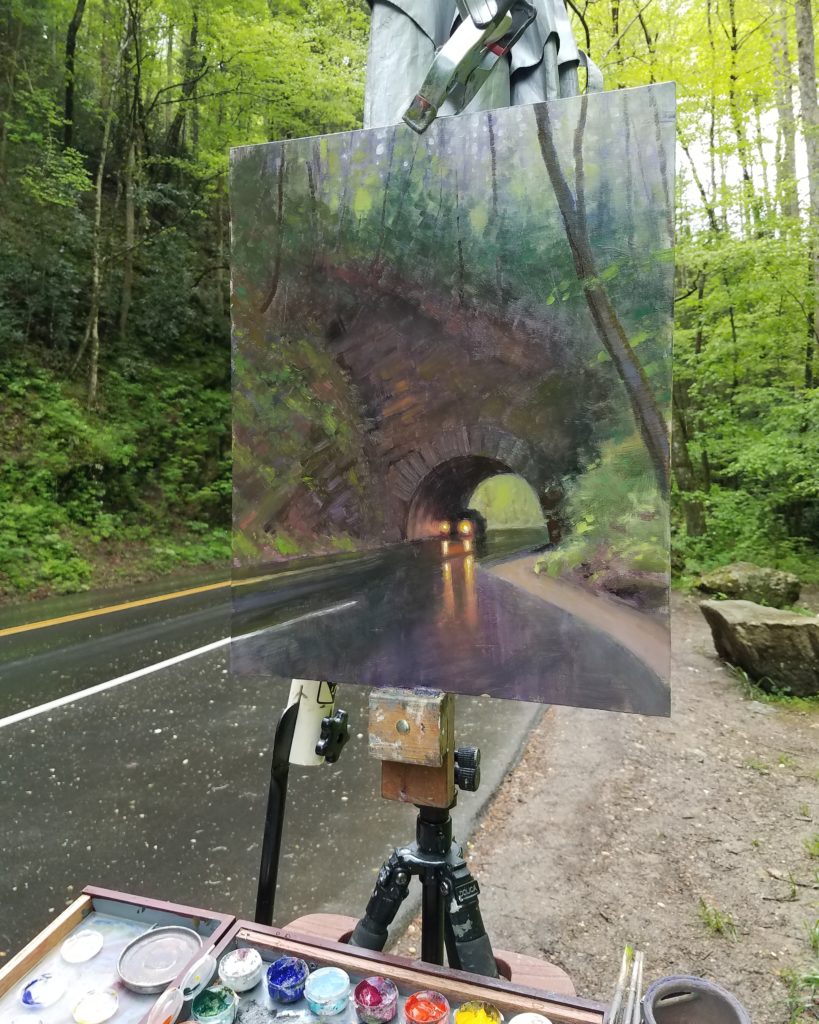
Cherie Dawn Haas: What first drew you to painting outdoors?
Jeremy Sams: I was first introduced to plein air painting after a conversation with artist Scott Boyle. I observed his work at a local gallery and was in awe at how life-like his paintings were. I wondered what he was doing different than me . . . maybe there was some special artistic secret? Nope! His advice to me was, “Jeremy, you need to go paint en plein air!” So, I took his advice one chilly February morning, and six hours later, after working on this tiny little painting, I became hooked!
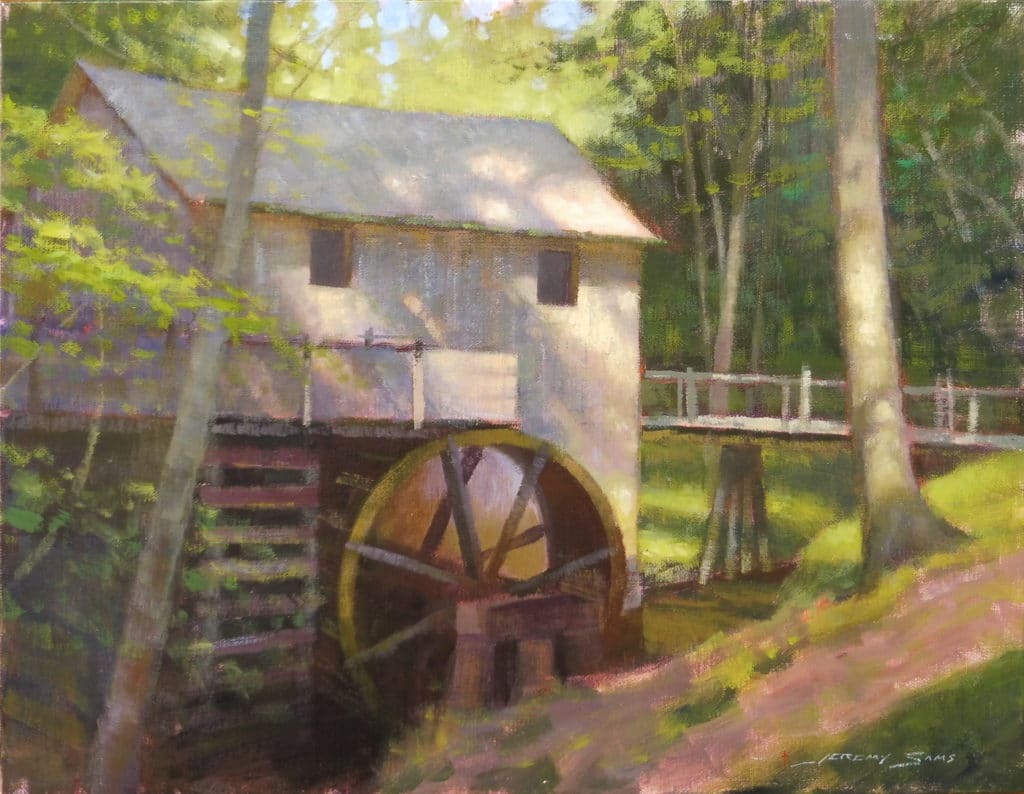
CDH: What do you wish you knew when you first started?
JS: I wish I knew more of how to simplify the subject matter, and not become obsessed with finding the “perfect” scene. I wasted so much time looking for the perfect compositional layout and the perfect lighting situation. Once I found a scene that satisfied my senses, I would end up spending way too much time trying to duplicate every little detail, like weird limb shapes.
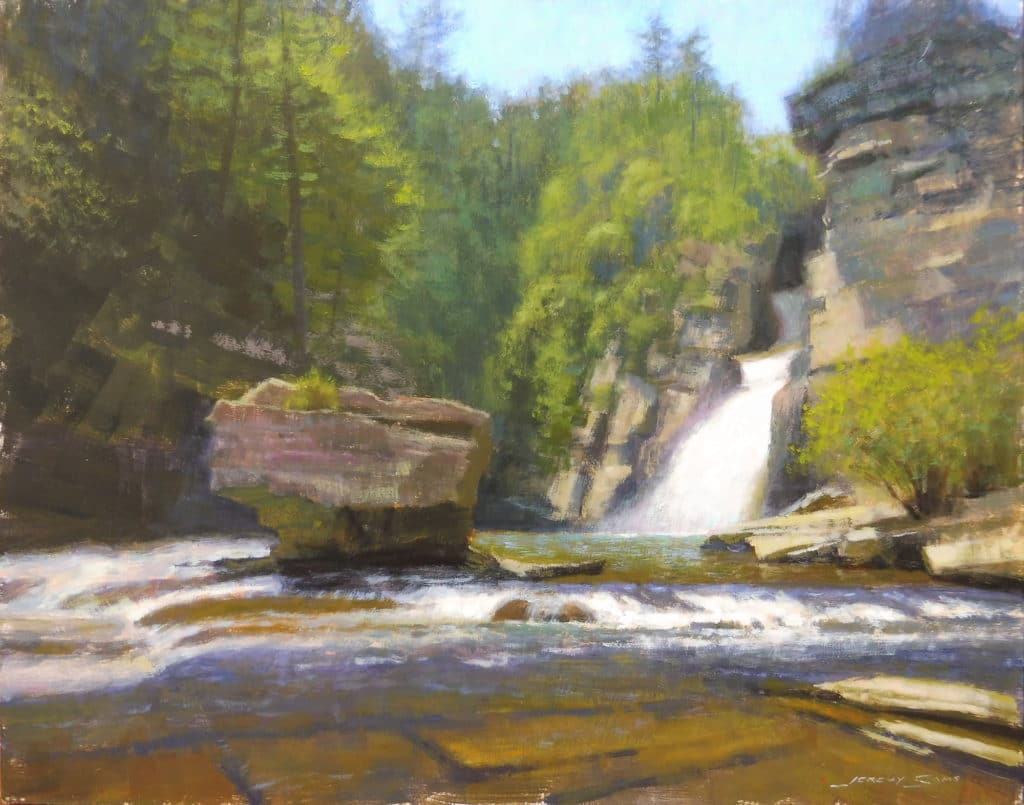
CDH: Where is your favorite place to paint, and why?
JS: I have several places that I just absolutely love, but I’d have to say my favorite is at the base of Linville Falls, North Carolina. My family and I used to visit there during my childhood, and my dad, my brother, and I would swim at the base of the falls (while mom watched) on those hot summer days.
Now, every time I hike to the base, I see the same scenery and even smell the same smells of fresh river water and eastern hemlocks. At the base, you feel the thunder of the water in your gut and it literally shakes you to your core. It’s a very humbling feeling knowing there is something at work that is much bigger than you. From the bottom of the falls, you have an incredible view of this massive tower of water flowing into the gorge and the beautiful clear river running through the valley showing all the fish and rocks beneath, all surrounded by these steep walls of hemlocks, pines, and rocks. This place contains everything that inspires me: water, atmosphere, light and shadow, and warm and cool colors all encapsulated in this one area that screams to me that there is a Creator who loves beauty.
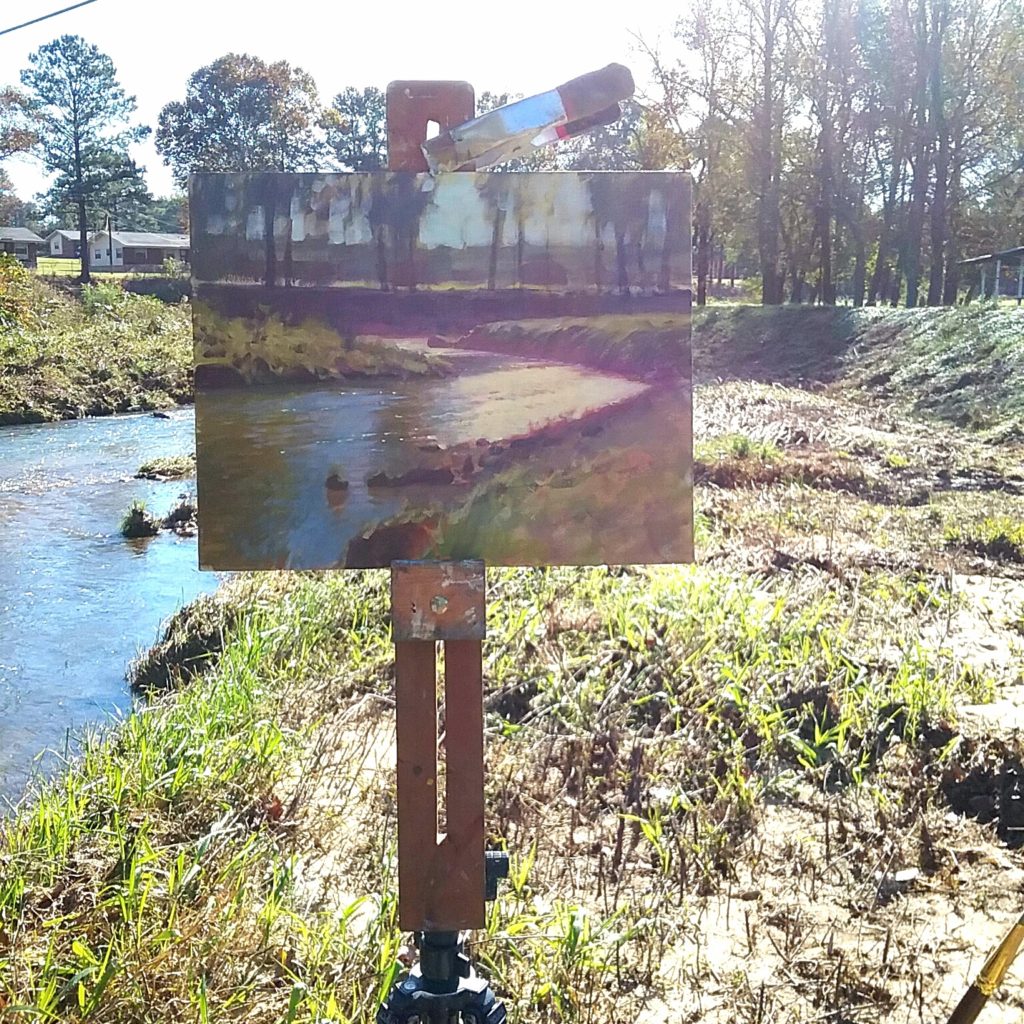
CDH: Who are some of the artists you admire, and why?
JS: Oh boy, this list could be very long! I’ll keep this limited:
Albert Bierstadt. I always loved his epic landscape paintings. His paintings, to me, captured something spiritual about the landscape with these high and lofty mountain ranges and dramatic light effects. There is a feeling of being very small and being confronted with the heavenly while observing his paintings.
Childe Hassam. The first time I saw his work in person, it nearly blew my mind. At a distance his seascape scenes looked almost hyper-realistic. But, as I moved closer, I began to see all these dashes of thick, textured strokes of color. They were all intermingled and seemed to vibrate as my eyes tried to make sense of what I was seeing. I fell in love with broken color after seeing his work.
John Carlson. I read his book, Carlson’s Guide to Landscape Painting, often and gain something new every time, it seems. I’m infatuated with his tree shapes and compositions.
Charles Movalli. I love his ability to handle acrylics, his bold brushstrokes, and his ability to simplify an abundance of information. Also, he was a student of Emile Gruppe, another of my favorites.
I’m also a big fan of Clyde Aspevig. His work is a delight to the eyes, with contrasting warm and cool colors, soft edges and deliberate textures, and compositions that seem natural and not forced by a formula.
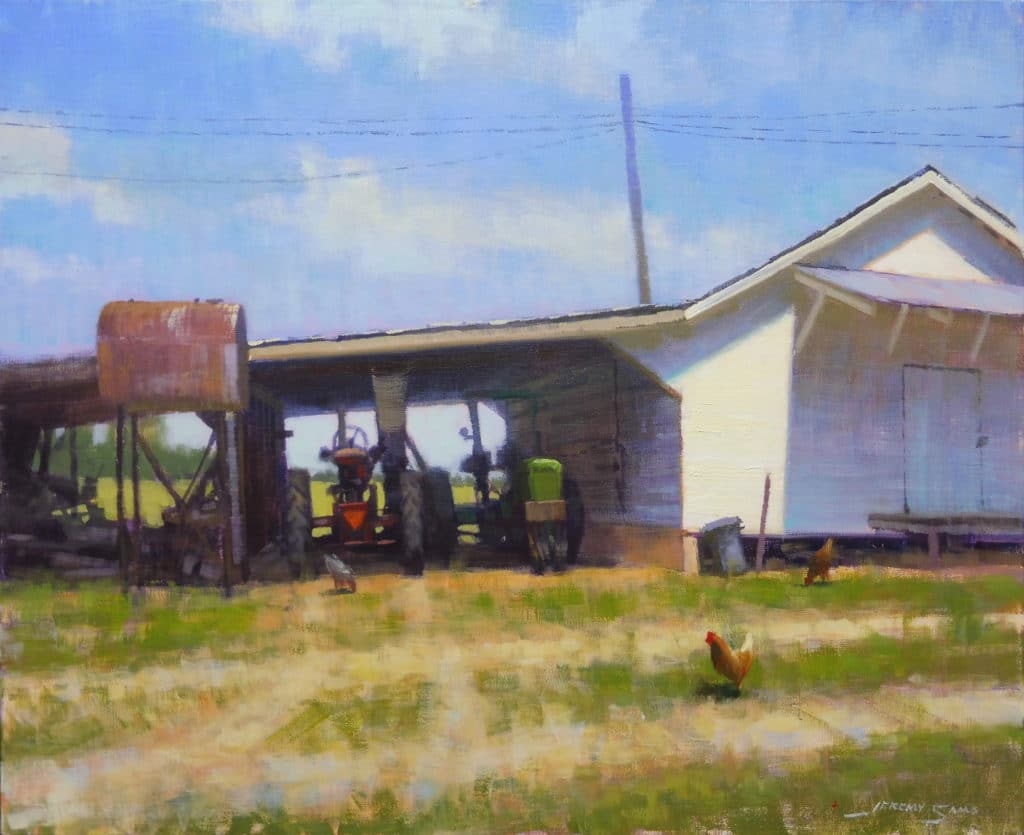
CDH: What’s the funniest thing you’ve experienced while painting outdoors?
JS: The funniest times are always when you get to paint with your friends and the goofing off and sarcasm that usually happens when you’re around like-minded artists. But I guess the funniest thing that happened to me was when I was painting at Myrtle Beach. I had my umbrella attached to my tripod (Bestbrella) because the sun was really beating down and I didn’t want it on my panel. Suddenly, the wind picked up and sucked my umbrella right out of the easel attachment and sent it tumbling down the beach. I, of course, ran after it feeling like I was a living a page out of a Dr. Seuss book.
To my amazement, the tumbling silver dish of destruction catapulted between two families lounging on the beach. Luckily, no one got hurt. Embarrassed, I proclaimed to the giggling families that it was a good day to fly a kite! Lesson of the day: don’t use an umbrella in the wind, and tighten down the little thumb screw that keeps the umbrella in the easel attachment!
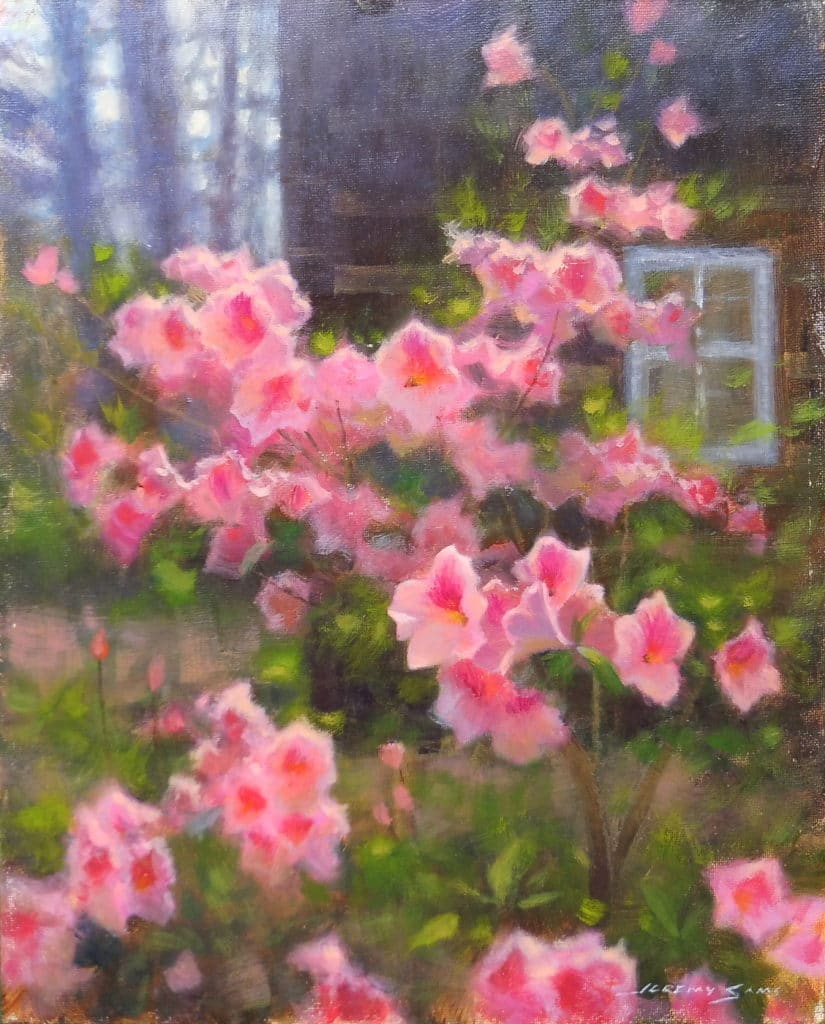
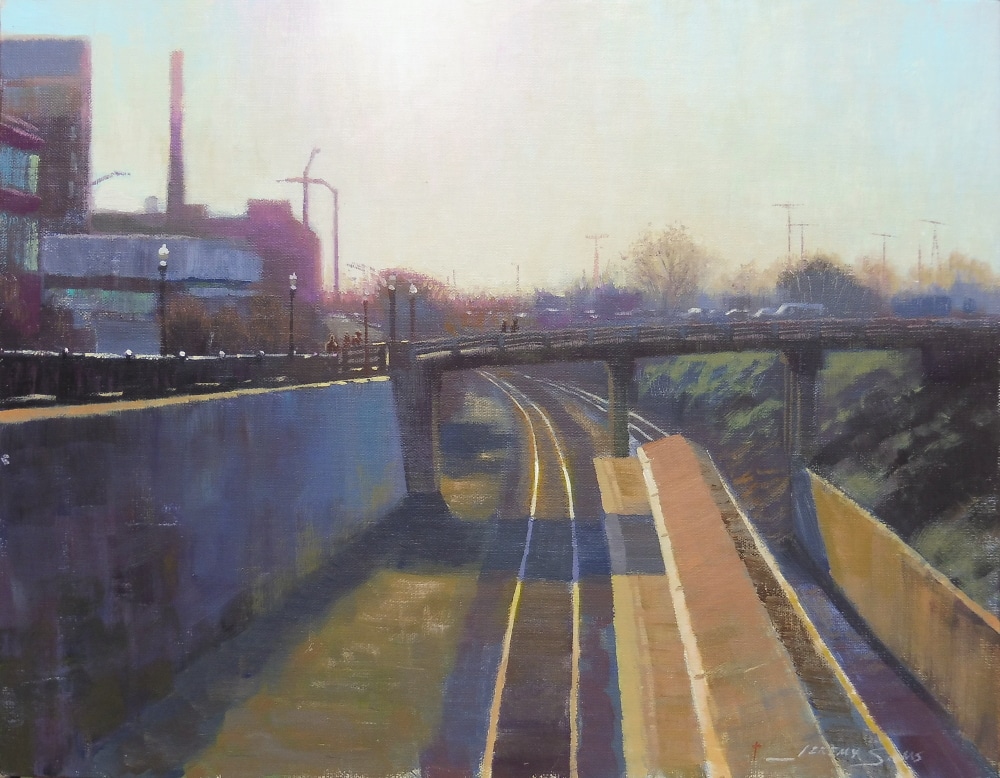
CDH: What’s your most common palette of colors, and why?
JS: I use a warm/cool version of the primaries along with some “convenience” colors: titanium white, ultramarine blue, teal, quinacridone magenta, cadmium red light, cadmium yellow medium, cadmium yellow primrose, viridian green hue, cadmium orange, and Naples yellow. I love the simplicity and color harmony you can get with a limited primary palette. However, I introduced either the warm or cool version of each to be able to obtain a broader color spectrum. Viridian green hue is one of my convenience colors, and I use it only when I need some special greens. It’s a very bendable color that can be either really cool or really warm when modified. Cadmium orange is great for neutralizing some of my blues when they’re too intense or if I want to create a nice neutral. I use Naples yellow basically as a modifier for white to keep it warm for highlights or clouds.
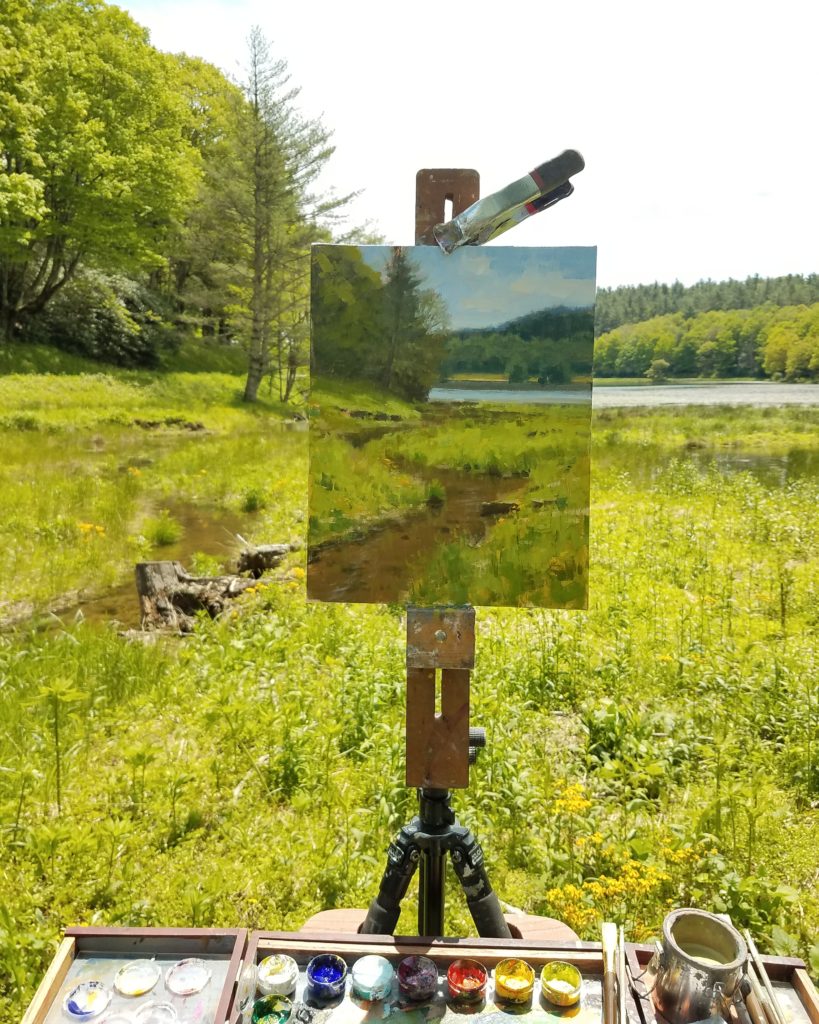
CDH: How do you line up your work with the background/subject so perfectly?
JS: Well, even though I use acrylics, I use basically an oil painters’ technique of working from dark to light, lean to thick. Soft edges in acrylics can be achieved easier now thanks to some modern products like Golden Open acrylics. So, in my style, I try to use every visual effect that I can in order to give the illusion of depth in the painting.
Most of the time, I’ll keep my distant objects cooler in temperature and softer in focus while leaving hard edges and more saturated color for my focal areas or interesting spots. In order to line up the painting with the background, you have to pay special attention to your initial drawing.
There is a sight size method that you can use that is very efficient, or you can just be careful to get the same angles and proportions as in the background. I usually do this by standing stationary in the spot where, as you look at the scene, your canvas is lined up in the exact area to be painted. I’ll then look at the right side of my canvas, and place a mark at any lines leading into the scene. I’ll do the same for all the sides. Now, I know where all of the lines exit the sides of the canvas.
Then, I continue to draw any angles by standing at the same distance from my painting and holding out my brush and lining it up with the angle of whatever line I’m trying to match. I then duplicate that same angle on the canvas. Once the line drawing is ready, I begin to block in the major shapes, paying special attention to my value structure.
After the block-in stage is complete and I’m happy with the overall composition, I begin to home in on matching the color and its temperature. All the detail, light areas, and accents are saved until the end. Then, if it all worked out right, you can take a photo of your scene with the painting and it has that Wylie Coyote look.
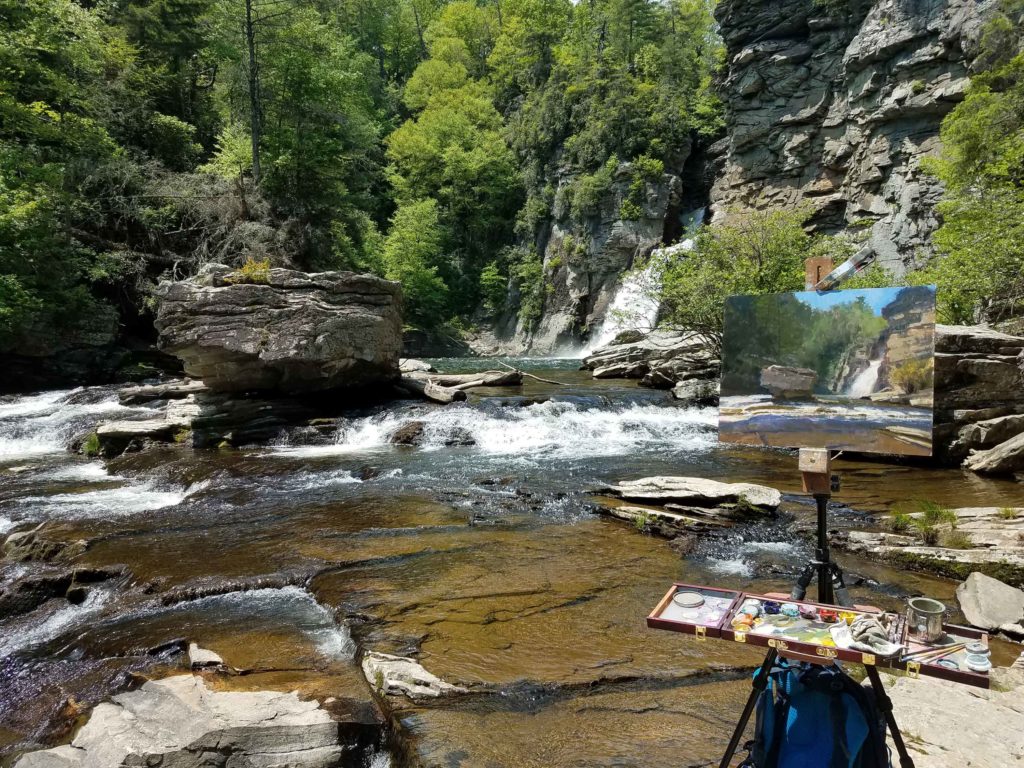
CDH: Anything else you’d like to add?
JS: If I could give any advice to beginners, it would be to continue to work on the fundamentals: drawing, perspective, composition, values, and edges. Don’t get bogged down with trying to produce a unique style. Your “voice” will come naturally as you continue focusing on the fundamentals. Experimentation is good, but you don’t have to force it.
Also, don’t get bogged down with thinking you can only paint the “perfect” scene. Some of the most intriguing paintings I’ve seen are of some of the most ordinary subjects. Last, I would say, compare, compare, compare. Compare values, compare color temperatures, and compare edges, whether they’re hard or soft.
Learn more about Jeremy Sams and his plein air paintings at www.jeremysams.com.
Upcoming travel and art events with Streamline Publishing:
- September 22-29, 2019: Fall Color Week: Ghost Ranch
- October 11-19, 2019: Fine Art Connoisseur Art Trip to France
- November 10-13, 2019: Figurative Art Convention & Expo
- May 2-6, 2020: The 9th Annual Plein Air Convention & Expo
Like this? Click here to subscribe to PleinAir Today,
from the publishers of PleinAir Magazine.

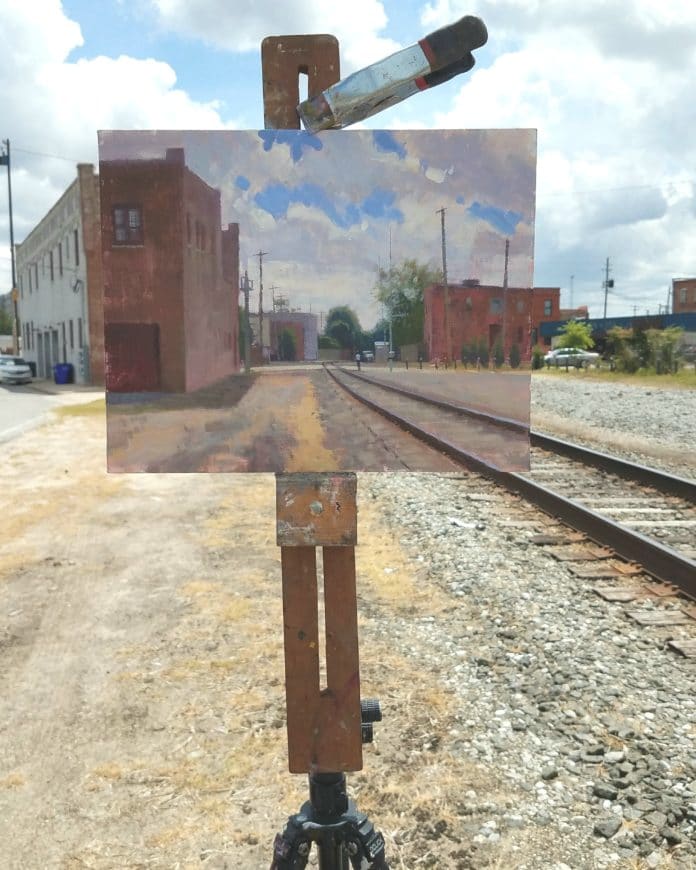
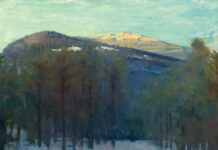
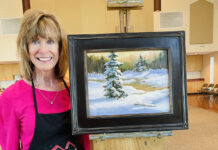
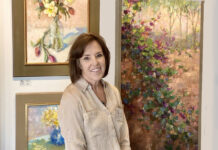
It is so inspiring to find an artist that uses Acrylic in Plein Air! I don’t use oils and was stopping myself from trying plein air painting because of it. Sam’s paintings are just beautiful and now I am inspired to go out and try!
I want to talk about my painting the painting is call Carlos penvenia it a painting that I enjoy and I want art museum I love that and art discussing I want to be an artist only and HAVE HTHOUGH ART CERUCLES AND PEOPLE I LOVE BEGING WITH ARTIST I WANT TO TO GET TO KNOW THOUGH ART AND HAVE A FAMILY I AND FRIENDS LIKE YOU YOUR FRIENDS MEANS A LOT TO ME HOPE
THIS IS ALL I DOING AND ART I TRY TO BE MORE OPEN WITH PEOPLE AND MYSELF MORE HONESS WITH MYSELF AND THE PUBLIC